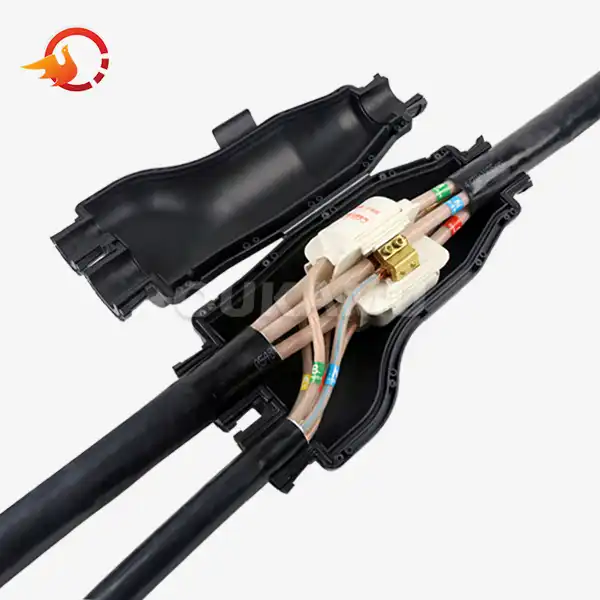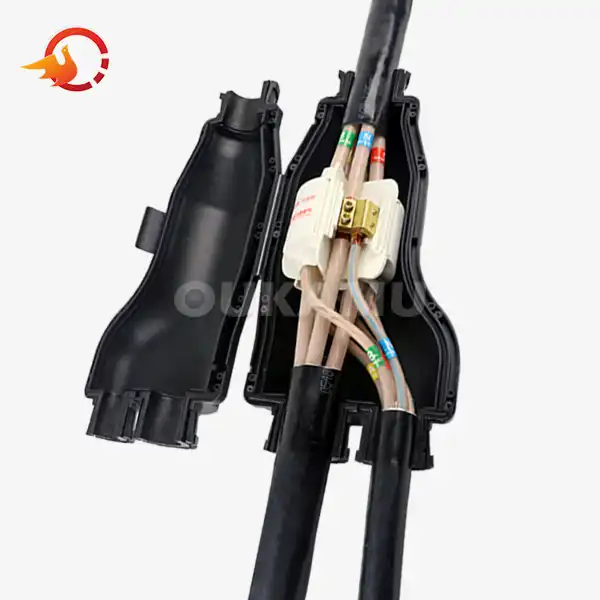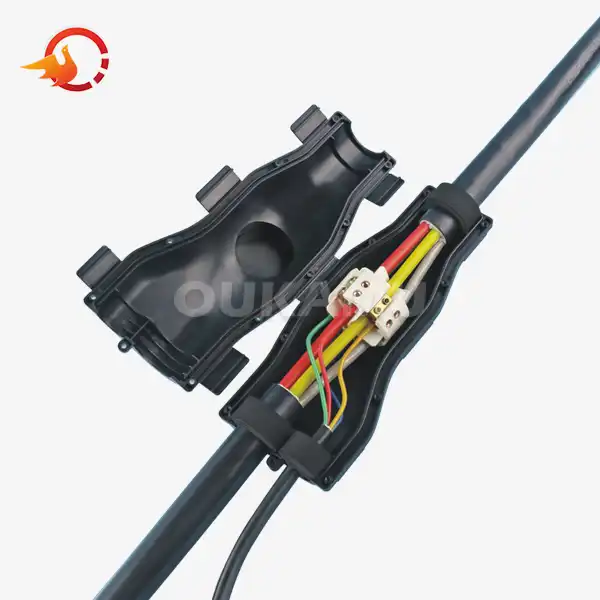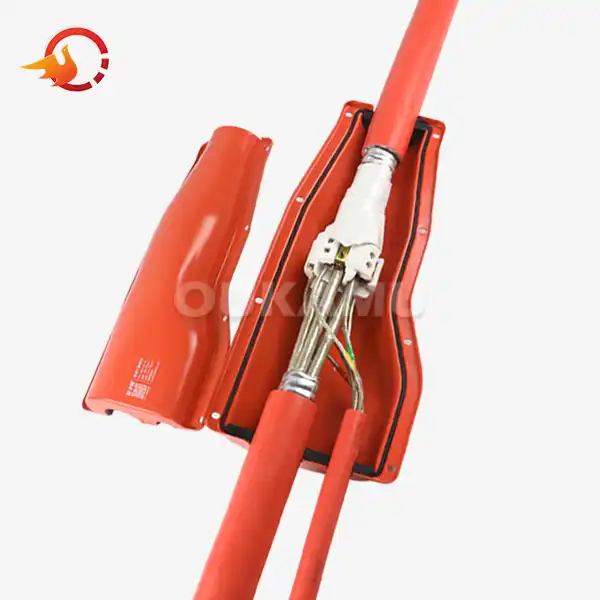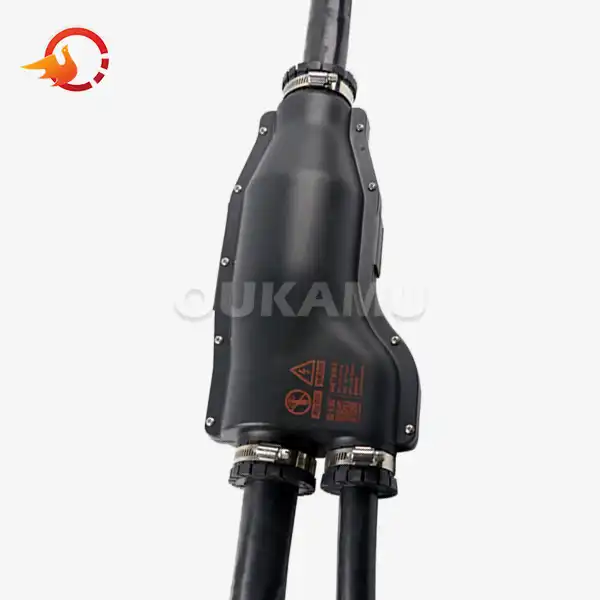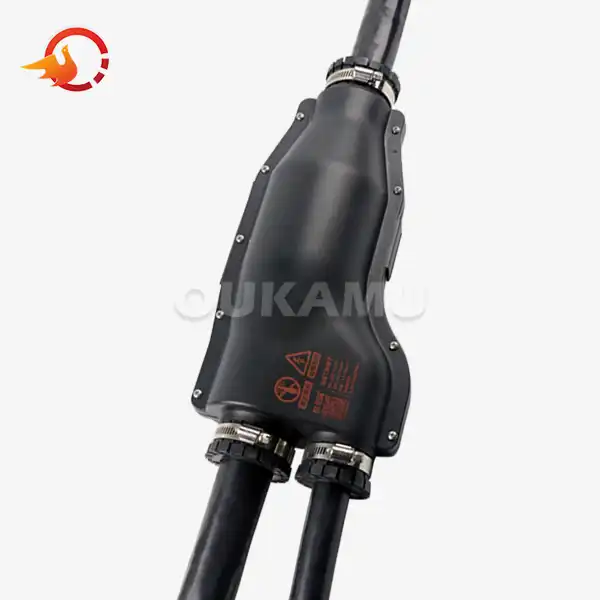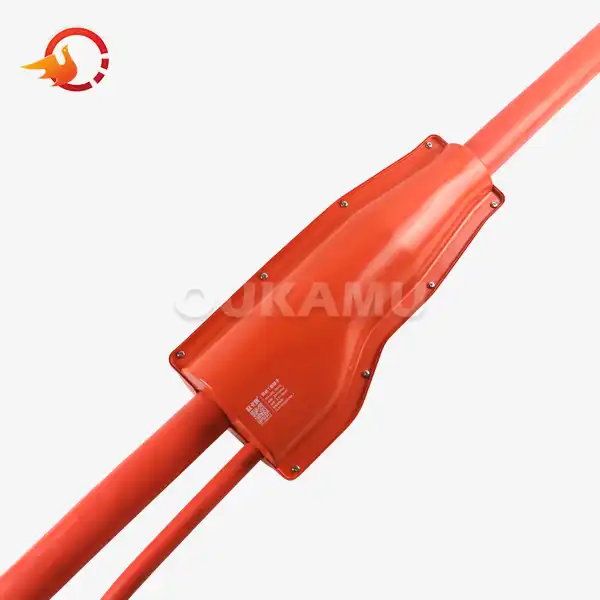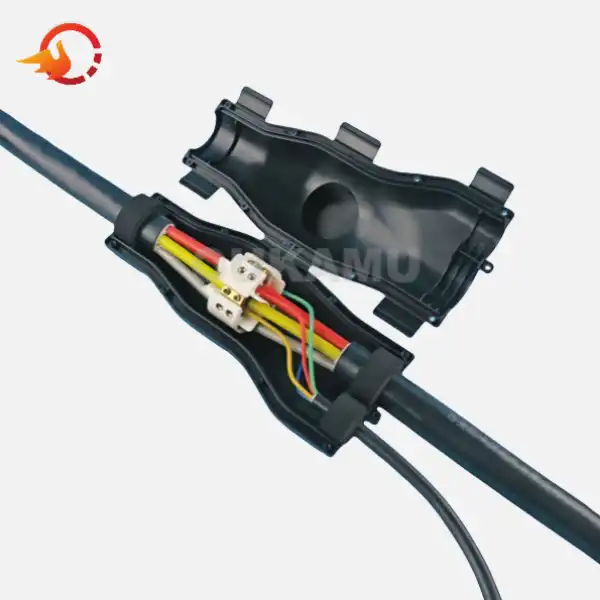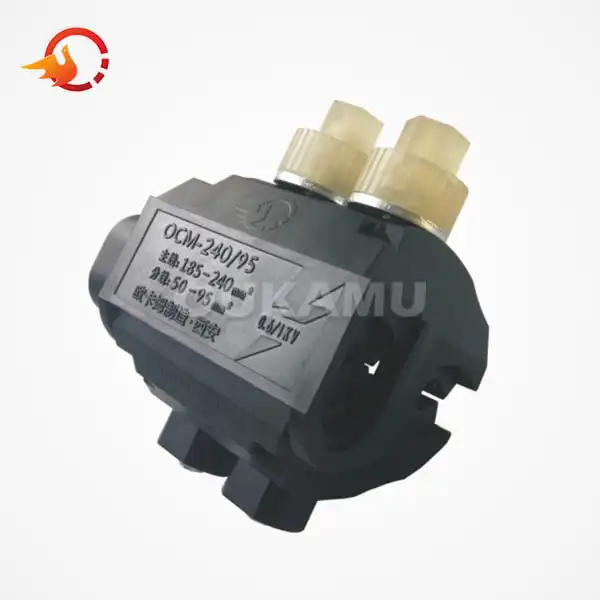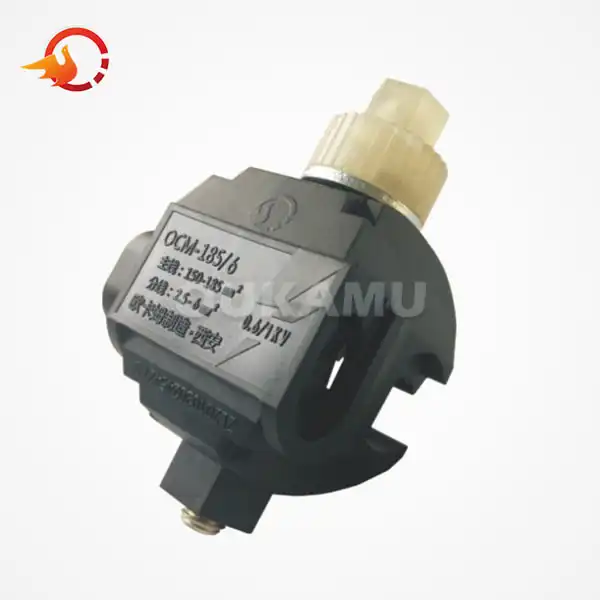Understanding Branch Cable Joints: Key Features & Benefits
 2025-03-17 09:13:41
View:389
2025-03-17 09:13:41
View:389In the world of electrical systems and power distribution, branch cable joints are the important parts in ensuring efficient and reliable connections. These specialized components allow for the creation of branch circuits from main power lines, enabling the distribution of electricity to multiple locations. This article delves into the intricacies of branch cable joints, exploring their functionality, applications, and selection criteria.
What is a Branch Cable Joint and How Does It Work?
A branch cable joint, also known as a branch connector or T-joint, is a specialized electrical component designed to create a connection point between a main cable and one or more branch cables. This allows for the distribution of power or signals from a primary source to multiple secondary locations.
The fundamental structure of a branch cable joint typically includes:
- Main cable entry point
- Branch cable connection points
- Insulation and sealing mechanisms
- Conductors for electrical continuity
The working principle of a branch cable joint involves several key steps:
1. The main cable is prepared by removing a section of its outer insulation and sheath.
2. The branch cable is similarly prepared, exposing its conductors.
3. The exposed conductors of both the main and branch cables are connected using specialized connectors or crimping methods.
4. The joint area is then insulated using materials such as heat-shrink tubing, cold-shrink sleeves, or resin compounds.
5. Finally, the entire joint is sealed to protect against environmental factors like moisture and contaminants.
Applications of Branch Cable Joints in Electrical Systems
Branch cable joints find extensive use across various sectors and applications in the electrical industry. Their versatility and efficiency make them indispensable in numerous scenarios:
Power Distribution Networks
In urban and rural power grids, branch cable joints are essential for creating distribution points from main power lines. They allow utilities to extend electricity supply to residential areas, commercial zones, and industrial complexes from a single main feed.
Renewable Energy Installations
Solar farms and wind energy projects often require complex cabling systems to collect and distribute generated power. Branch cable joints facilitate the interconnection of multiple solar panels or wind turbines to central inverters or transformers.
Industrial Facilities
Large manufacturing plants and industrial complexes use branch cable joints to distribute power from main supply lines to various machinery, equipment, and lighting systems across the facility.
Transportation Infrastructure
Railway electrification systems, airport lighting, and traffic signal networks rely on branch cable joints to create multiple power taps from primary supply cables.
Mining and Oil & Gas Industries
These sectors often require power distribution in challenging environments. Branch cable joints provide reliable connections for powering equipment in underground mines or offshore platforms.
Temporary Power Setups
Construction sites, outdoor events, and emergency response scenarios frequently use branch cable joints to create multiple power outlets from a single generator or temporary power source.
The versatility of branch cable joints in these applications stems from their ability to:
- Reduce the need for multiple long cable runs
- Minimize voltage drop in extended circuits
- Provide flexibility in system design and future expansions
- Enhance system reliability by reducing the number of connection points
How to Choose the Right Branch Cable Joint for Your Project?
Selecting the appropriate branch cable joint is crucial for ensuring the safety, reliability, and efficiency of your electrical system. Consider the following factors when making your choice:
- Voltage Rating: Ensure the branch cable joint is rated for the system's operating voltage. Joints are available for low voltage (up to 1kV), medium voltage (1kV to 33kV), and high voltage (above 33kV) applications.
- Current Carrying Capacity: The joint should be capable of handling the maximum current that will flow through the system without overheating or degradation.
- Cable Type and Size: Branch cable joints must be compatible with the specific types of cables used in your system, such as XLPE, PVC, or paper-insulated cables. Additionally, ensure the joint can accommodate the cross-sectional area of both the main and branch cables.
- Environmental Conditions: Consider the installation environment. Outdoor installations may require joints with enhanced UV resistance and waterproofing. Underground applications need joints that can withstand soil pressure and moisture.
- Installation Method: Choose between heat-shrink, cold-shrink, or mechanical joints based on the available installation equipment and expertise. Some environments may restrict the use of heat, making cold-shrink or mechanical joints preferable.
- Number of Branches: Determine how many branch connections are required. Some joints allow for multiple taps, while others are designed for single branch connections.
- Insulation Class: The insulation class of the joint should match or exceed that of the cables being connected to ensure proper electrical isolation.
- Standards Compliance: Verify that the branch cable joint meets relevant industry standards and has appropriate certifications for your region and application.
- Ease of Installation: Consider the skill level required for installation. Some joints are designed for quick, tool-free installation, while others may require specialized equipment and training.
- Future Expansion: If system growth is anticipated, select joints that allow for future additions or modifications without complete replacement.
Conclusion
Branch cable joints are indispensable components in modern electrical systems, offering flexibility, efficiency, and reliability in power distribution. Their ability to create multiple connection points from a single main cable streamlines installation processes and reduces overall system complexity. As technology advances, we can expect to see further innovations in branch cable joint design, potentially incorporating smart features for remote monitoring and diagnostics.
For those seeking expert guidance on branch cable joints and other cable connection solutions, Xi'an Oukamu Electric Co., Ltd. offers a wealth of experience and cutting-edge products. With 17 years of specialization in branch cable connectors and pioneering technologies, they are well-equipped to address your specific needs. For more information or to discuss your project requirements, don't hesitate to reach out to their team at info@okmbranchcable.com.
References
1. Smith, J. (2022). "Advanced Techniques in Cable Jointing for Power Distribution." Electrical Engineering Journal, 45(3), 78-92.
2. Johnson, R., & Williams, E. (2021). "Comparative Analysis of Branch Cable Joint Technologies." Power Systems Technology, 18(2), 205-220.
3. Brown, A. (2023). "Environmental Impact and Sustainability of Modern Cable Jointing Methods." Renewable Energy Systems, 30(4), 412-428.
4. Lee, S., & Zhang, Y. (2020). "Reliability Assessment of Branch Cable Joints in Smart Grid Applications." IEEE Transactions on Power Delivery, 35(1), 321-335.
5. Garcia, M. (2022). "Innovations in Branch Cable Joint Design for Harsh Environments." Industrial Electrical Systems, 27(3), 156-170.






